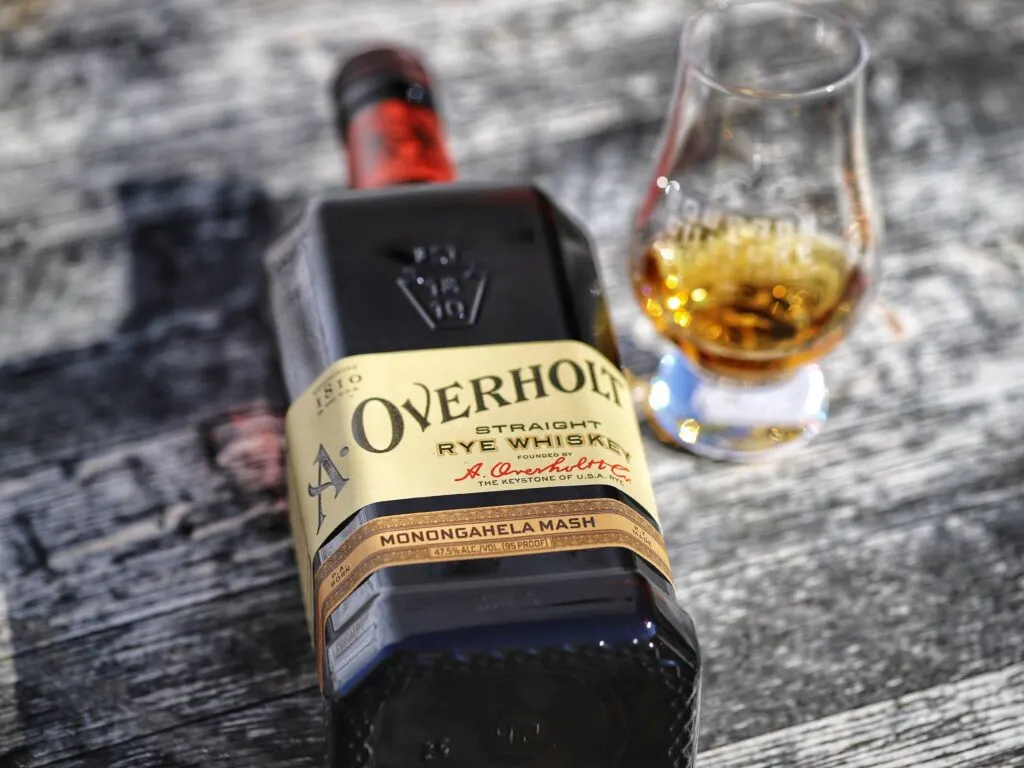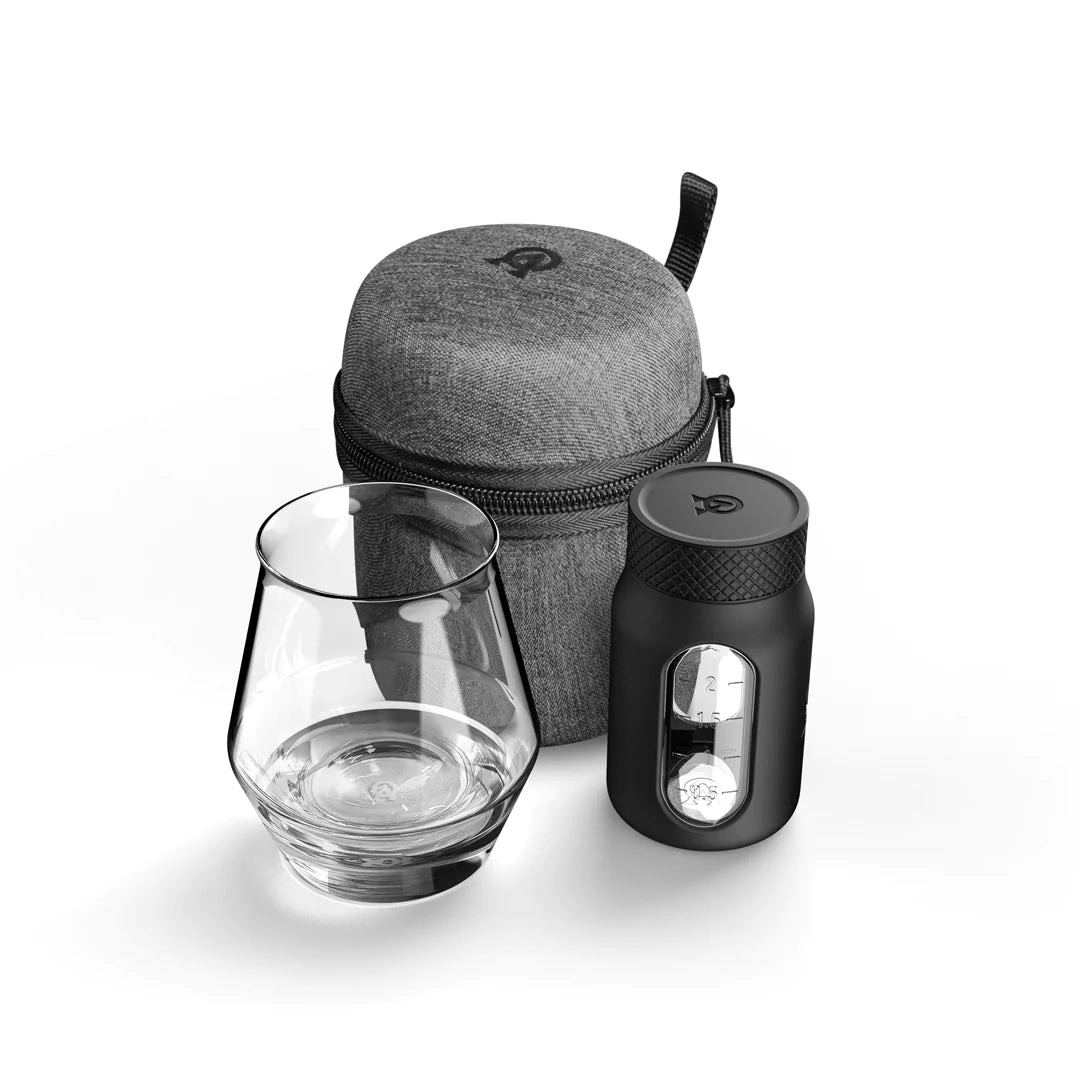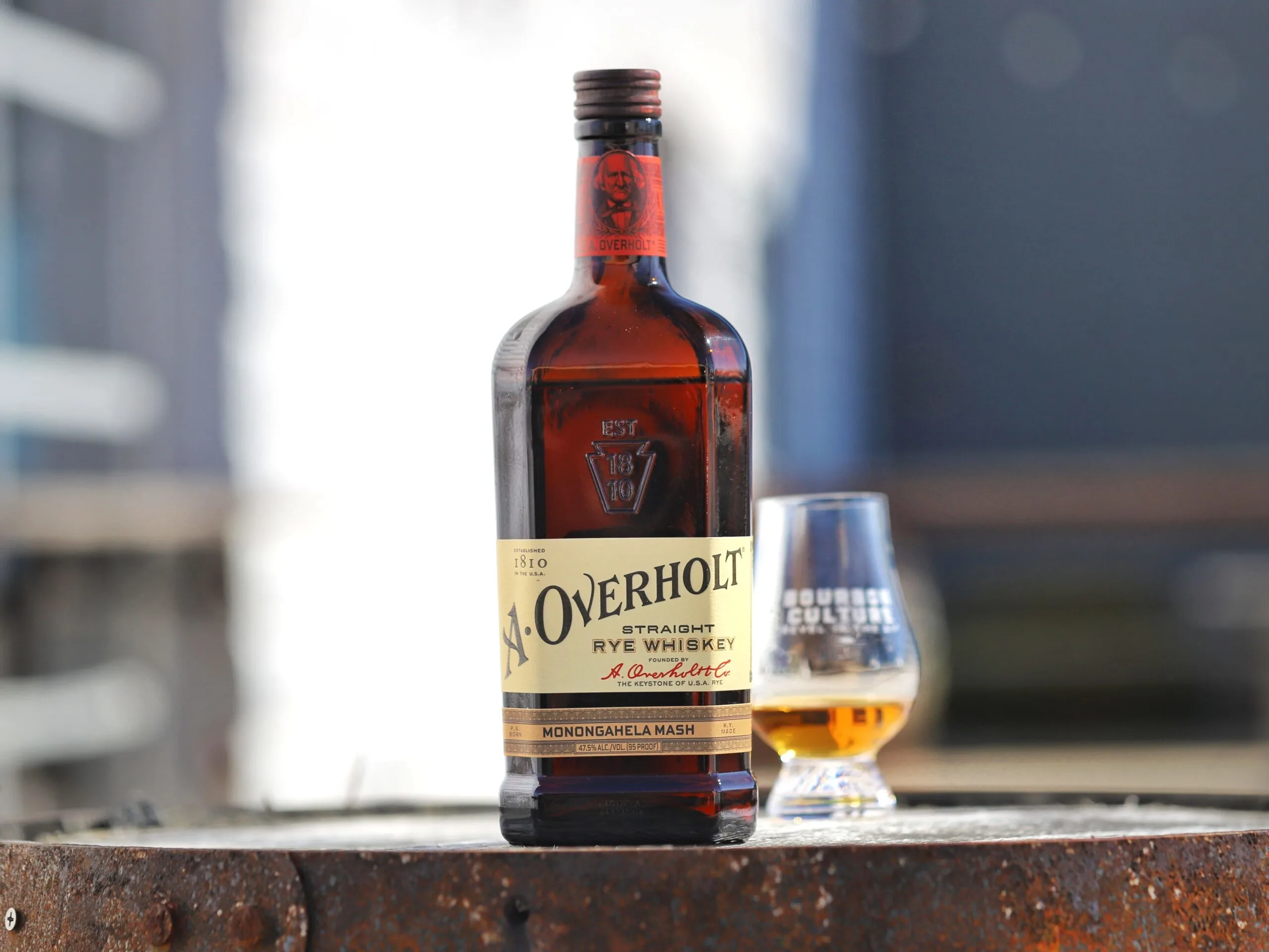| Don't like ads? | No ads |
One of the things I don’t think gets talked about enough with the history of distilled spirits in America is just how much this nation was built on rye whiskey. Some of the earliest transcripts of distilling show how many colonial families owned pot stills. And if they weren’t making brandies, they were making rye whiskey. That’s not to say that “bourbon” wasn’t being made in the 1700’s and 1800’s, but most of it resembled what we would now call “Corn Whiskey” (or maybe even Light Whiskey).
Abraham Overholt and his legacy on Pennsylvania Rye Whiskey
Rye Whiskey was practically a staple for the early communities along the mid-Atlantic coast. It continued to spread as people moved west of the Appalachian Mountains. The grain grew well even in poor soil and cool climate, making it widely available. It’s no surprise then that Pennsylvania – one of the most populous mid-Atlantic states at that time – became such a large producer of rye whiskey. It was said that around 1899, 38% of all bonded whiskey in the United States was bottled in Pennsylvania. The next largest states for production were Kentucky and Maryland – but keep in mind that many other states like Illinois and Michigan had large, active distilleries too, so this was even more impressive of a stat.

World War I, Prohibition and World War II (where distilleries were told to create alcohol specific to the war effort) almost killed off America’s love for rye whiskey. The 25-year absence of quality, well-aged rye saw Americans turning to clear spirits or very light Canadian blends because that’s all they had access to. By the time whiskey distilleries could get back on their feet following World War II, the population’s tastes had changed. Rye Whiskey seemed foreign to most people and the demand dropped. One-by-one, Pennsylvania’s treasured distilleries closed down.
The story is the same with Old Overholt. I would love to tell you the story of how the Old Overholt brand ended up in the hands of Jim Beam, but frankly David Wondrich did such an incredible job explaining it that I will just tell you to go read his two-part article here and here.
After decades of neglect, Jim Beam is finally giving the Old Overholt line the respect it deserves
I’ve got a lot of good things to say about the Jim Beam brand, but I also have a few nits to pick with them too. One of them centers around how much they’ve neglected the Old Grand Dad and Old Overholt brands that they acquired from National Distillers in 1987. Those were two incredible brands that were neutered shortly after due to cost-cutting practices. Old Grand Dad became a young bourbon that has begun to resemble traditional Beam bourbon more and more over the years (despite the claims that it uses the same yeast and mash bill that it did under ND) and Old Overholt lost its identity after being converted to Beam’s standard 51% Kentucky rye whiskey (with plenty of corn in the recipe).

In a startling change of events, someone in Beam’s upper management seems to have greenlit a revamp of the Old Overholt brand. We first saw the winds of change in 2020 when they unexpectedly rolled out with an 11-year-old Old Overholt rye whiskey. Then they began to tinker with the bottles and labels of the entire brand – most significantly by changing the glass on their bottles to a dark amber. Why does that matter? Because that’s what turn-of-the-century Old Overholt was bottled in. But the biggest change came last year when the TTB label submission of a new product was leaked; Old Overholt was getting a new mash bill.
A. Overholt Monongahela Mash returns to its roots
One of the biggest issues knowledgeable enthusiasts had with Beam’s handling of the Old Overholt brand was that it abandoned its Pennsylvania roots by using a “Kentucky Style” of rye whiskey. What I mean by that is Kentucky ryes typically have the bare minimum of rye allowed (51%) and use a lot of corn in the other part of the mash bill. Frankly, this leaves a rye whiskey that tastes a lot like bourbon. But true Pennsylvania ryes never included corn in the mash bill. Recipes back in the day tended to be either “Pure Rye” – a 4:1 ratio of rye and malted barley or an “All Rye” which meant that 100% of the mash bill was rye (the malted component was malted rye instead of barley).

Jim Beam not only kept it original by going back to the Pure Rye style of mash bill (which they list as 80% Monongahela rye and 20% barley malt), but they also began to source rye specifically grown in the Monongahela region of Pennsylvania. They continued the tradition of using a dark amber glass but gave it an entirely new shape. The wood topper is aesthetically pleasing to look at (I don’t recall any other brand using one in this shape) and a “Keystone” (from “The Keystone State”) is prominently featured on the label and raised glass surfaces. This is possibly one of the most beautiful presentations of a bottle of whiskey that you can get for under $100.
Beam could have nickel-and-dimed us enthusiasts with this new release, but they kept the price at $40. For a four year old, non-chill filtered 95 proof rye whiskey being sold in 2024, this seems perfectly fair. Now all that’s left to find out is if the taste makes it worth it. So let’s find out. A special thanks to my Pennsylvania friend J8son for his help in getting me this bottle. As usual, I drank this neat in a glencairn.
Tasting Notes
Nose: One of the most striking things I become aware of is how completely different the scent profile is from the standard Beam 51% rye mash. The A. Overholt nose is perfectly sweet, but it’s not sweet like caramel. It’s more like a molasses. Soft baking spices like ground cinnamon, nutmeg and a touch of anise are all over the place. The nose is softer with hints of vanilla, broken-in leather, raisins and freshly spread mulch. There’s also a tiny bit of citrus that I start to pick up on halfway through nosing the dram.
Palate: I’m really impressed with how different this rye tastes from almost any other non-craft rye whiskey on the market today. Rye bread with a hint of earthiness give the experience of something different. And even though it’s only 4 years old, there are no harsh or astringent features to the liquid. Citrus flavors feel like they’ve had baking spices blended in with them. The woody scent of “mulch” that I mentioned on the nose makes its appearance on the palate. I have never tasted mulch before, but this has got to be the manifestation of what it would taste like. It’s different, but in a good way. Floral notes give way to molasses sweetness. At some point, I must confess that this feels like I’ve put a few drops of some sort of cinnamon/rye essential oil on my tongue. It’s got a wonderfully rich body for the proof. I’m entranced by it.
Finish: For being only 95 proof, I’d think the finish would set kind of light after the sip was complete. It’s the exact opposite. It’s got a woody sort of aftertaste with lots of cinnamon and a spicy sort of sweetness. There is also a hint of the floral flavors that still linger around. The finish is not too dry or too sweet, it’s just the perfect kind of in-between.
Score: 7.5/10
I can’t begin to tell you how refreshingly different this rye whiskey is. When I learned that it was still made with Beam’s standard “Jug Yeast,” I figured it was going to be a peanuty affair and have little to differentiate it from Knob Creek Rye Whiskey. I couldn’t have been more wrong.
Part of the reason why Pennsylvania rye was so sought after back in the early 1900s was because of the three-chamber still that was so dominant in the distilling community at that time. It created a whiskey that was more refined compared to a pot still yet still left in plenty of oils in the whiskey. I don’t know if my knowledge of that process prior to drinking this new bottle subconsciously made me believe this rye was oily, but in my notes I swear I continued to pick up on a heavy, oily texture as I tasted it. I know Beam only has column stills that they work with, but it was almost as if they dialed in some of the old magic to make this rye whiskey with the same consistency that it would have had 100 years ago. The ghost of Old Abe would be proud.

Final Thoughts
For all of the praises I’ve just heaped on this bottle, you’d think that I’d give it a higher score. And maybe it deserves one, but this feels right. It’s been a long time since I’ve had a new product that has been so well-sorted right out the gate. Beam did their homework – and it shows. So of course you should buy this bottle if you see it. If you’re a rye lover, find a way to get this in your cabinet pronto.
Before I finish this review, I also want to add one more thing. Most of the bottles that set on the bottom shelf retain names of whiskies that used to mean something back in the day. Now they’re blended whiskies, aged for less than 4 years or bottled at 80 proof. It’s sad to read their history and then see how distilleries just fill them with swill. With that being said, I’m happy to see that Beam is dedicated to lifting this sacred brand up out of the depths and giving it the packaging and whiskey worthy of its name. All that’s left now is to do the same thing for the Old Grand Dad brand. You can do it, Beam/Suntory. Make the whiskey worthy of its heritage again.

Featured Products
- Neat Traveler

- View Larger
- Description:The Aged & Ore Neat Traveler is a complete travel kit for spirits. We combined our widely praised Neat Glass with one of our 3oz Flight Bottles and housed them together in a custom EVA travel case. Perfect for a night away with your favorite pour. The tie
- Bottle Flight

- View Larger
- Description:The Aged & Ore Bottle Flight is a premium set of 4 custom silicone wrapped glass bottles designed to transport and share samples of your favorite spirits. The flight bottles come in a custom EVA travel case that fits perfectly in any small bag. An Aged &
- Travel Bundle

- View Larger
- Description:This Bundle combines two of our crowd favorite products, creating the ultimate travel bundle to bring along your favorite spirits and glassware. Bundle Includes: Neat Traveler (Gray) Bottle Flight (Gray) Note: This bundle is only available in gray and col
*Bourbon Culture is reader-supported. When you buy through links on our site, we may earn an affiliate commission.


Nicole
Friday 12th of April 2024
Can you share where you got your information that the rye in this mashbill is PA-sourced? Beam themselves does not claim that, and I do not believe that to be true.
Mike & Mike
Monday 15th of April 2024
I have spoken to an insider at Beam who initially told me that it was sourced from Pennsylvania. But after reconfirming with him, he says that he's not entirely sure if the rye was harvested in Pennsylvania, but it's a variety that was used in most PA ryes back in the day (and no, it's not Rosen).
Zenatello
Wednesday 28th of February 2024
I saw this at a PA LCB store over the weekend, and bought a bottle. I need more time to sample it, but I was more than pleasantly surprised. I feel like your score is right on the mark. The bottle, label, and cork combination has to be one of the best new designs I have seen in a long time for a whiskey.
And I couldn't agree more with Jason Gerace's praise for your thoughtful work. I always feel a bit of joy when I see you have posted a new review.
Jason Gerace
Tuesday 27th of February 2024
Hey I've never felt compelled to comment on a whiskey review before, but I wanted to thank you for this one. I don't know of anyone else writing with this much thought and care, and I love your specific historical detail to highlight why this move toward heritage matters and, in the end, what that means for the whiskey. Love your work, wanted to let you know. Thank you.
Mike & Mike
Tuesday 27th of February 2024
It's comments like these that keep me going. Thanks so much for your support and cheers to you. I'll keep 'em coming